When the weather starts to hint at summer, it's difficult not to daydream of backyard picnics and poolside afternoons. But if you're a beginning gardener, and your garden is in an eternal state of winter hibernation, the dread of spring cleaning (or lack of a green thumb) could be preventing you from creating the perfect summer sanctuary. Whether your garden is big or small, doing any type of upgrade can be fairly simple, as long as you stick to a clear plan. By simply figuring out your essentials, utilizing all your space, drawing out your plans, and sticking to a consistent style, you can come up with a clear and easy garden plan that will satisfy all your outdoor needs.
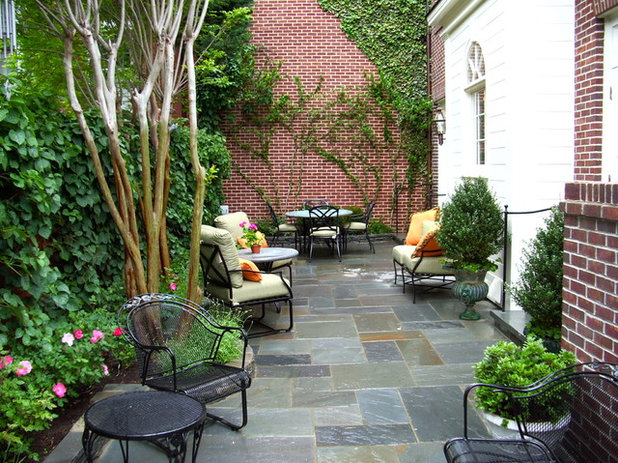
Notting Hill Gardens | Design Build Construction
1. Figure out your must-haves. Compromise is a big part of planning a garden. While we'd all love a fish pond, a hot tub,
and beautiful landscaping, there's a good chance that you won't be able to have everything you want in a defined amount of space. Before jumping in headfirst and going crazy at the garden section of Home Depot, spend some time wandering around your garden at different times of day to help you figure out what will enhance the space even more. What are the elements that you can't live without in an outdoor area? Do you love to entertain outdoors? Is a patio and outdoor dining area a must for you? Make sure to incorporate those aspects, then base the rest of your garden around it.
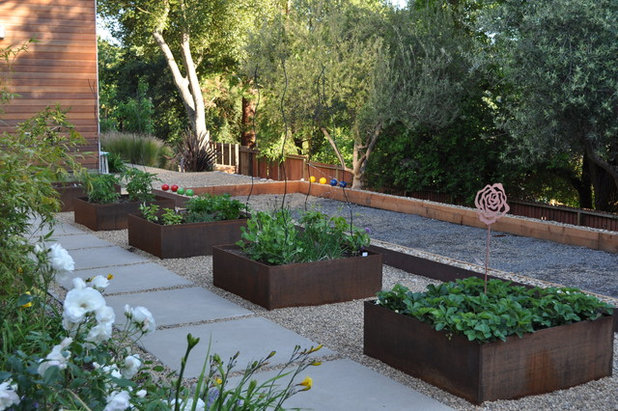
Huettl Landscape Architecture
A garden (particularly a smaller garden) is a great excuse to let your imagination run wild, and to experiment with different looks. This carefully planned out space has a great little walkway, raised vegetable beds, and a bocce ball court. If you lay out how each and every bit of space in your garden will be used, you'll be surprised at how many of your must-have elements you can incorporate!
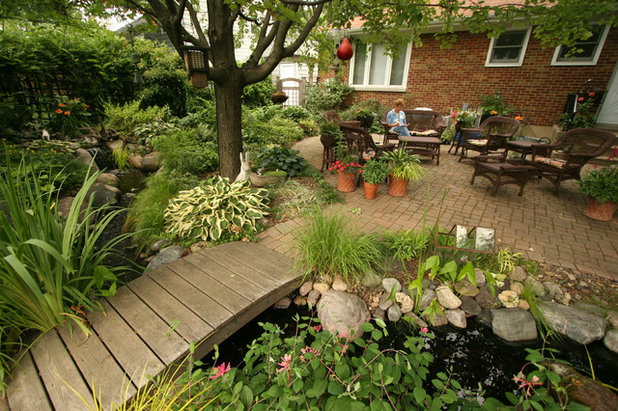
Aquascape
Relaxation was clearly what the owner of this garden had in mind. A paved patio for outdoor entertaining, vine-covered fences for privacy, and a lush and natural looking water feature all make the most of this space and come together to create a little oasis.
Deciding on the must-haves in your garden can also help you decide on a budget. Try to spend money on materials that are highly visible and need to be of good quality — patio paving, stone walkways, furniture, etc. Offset these costs by saving in other areas — such as cutting out on sprinkler systems (if possible), or scrounging up other materials and outdoor accessories at recycling centers or flea markets.
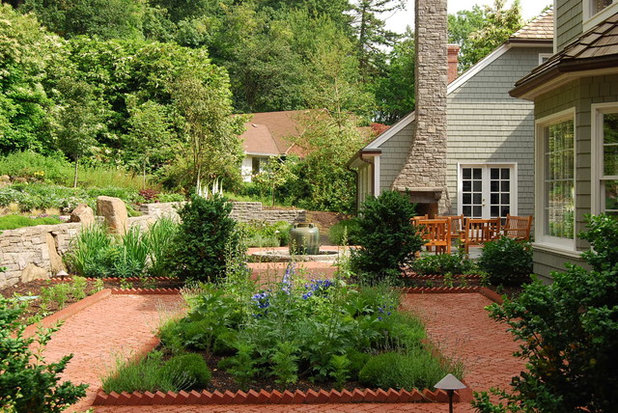
Samuel H. Williamson Associates
2. Consider your whole space. Incorporate hardscaping as well as landscaping into your garden. Make room for people as well as plants — otherwise your garden won't be able to be enjoyed properly! This homeowner was careful to plan and separate areas assigned to different functions. Brick walkways outline a garden area around the perimeter, with a spot at the end for an outdoor dining set.
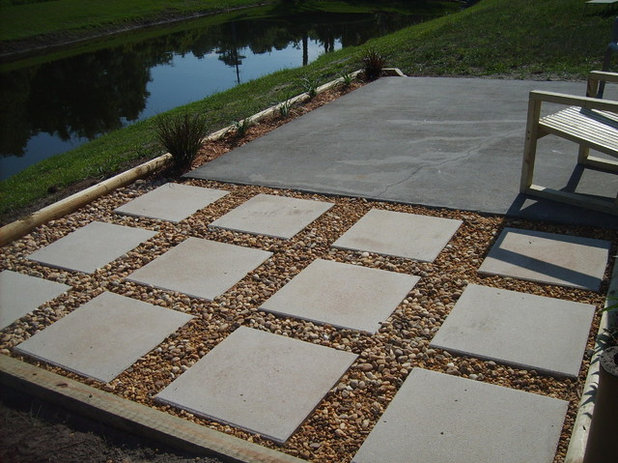
Just because you want to incorporate more hardscape into your garden doesn't mean it has to be the same monotonous piece of concrete. Break up the space by integrating different types of pavement and stone. This combination of pebbles, stepping stones, and pavement adds a good sense of visual interest and helps prevent rainwater runoff.
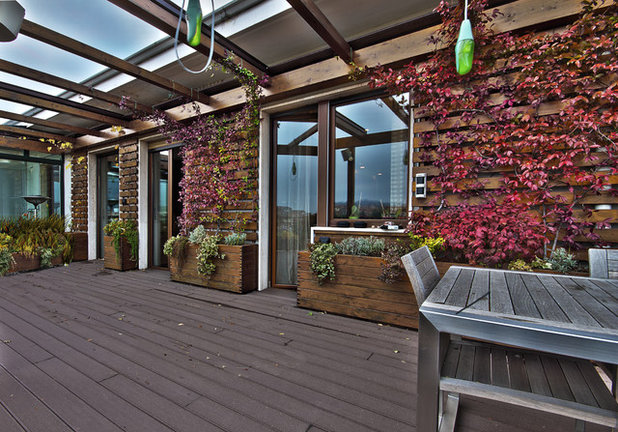
Diego Bortolato Architetto
Don't forget about vertical space! Walls and fencing are just as fair game as the ground. Make use of this space by implementing attractive vines and creepers, hanging lights, sconces, or even picture frames and mirrors.
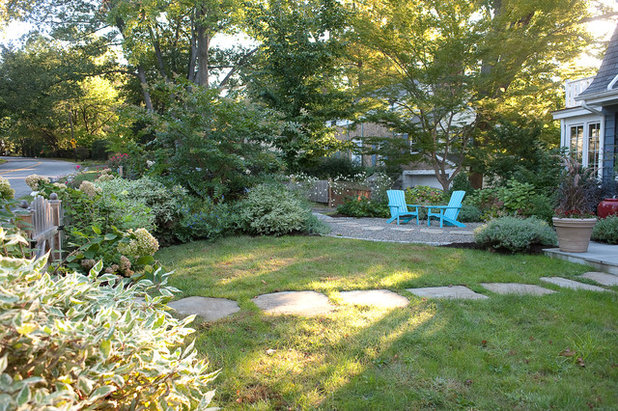
Westover Landscape Design, Inc.
Sectioning off segments of your garden in strong shapes on a diagonal will make it look like your garden is wider and longer. Define areas of grass, pavement, and landscape with borders of rocks or bricks to break up big sections and add texture and interest.
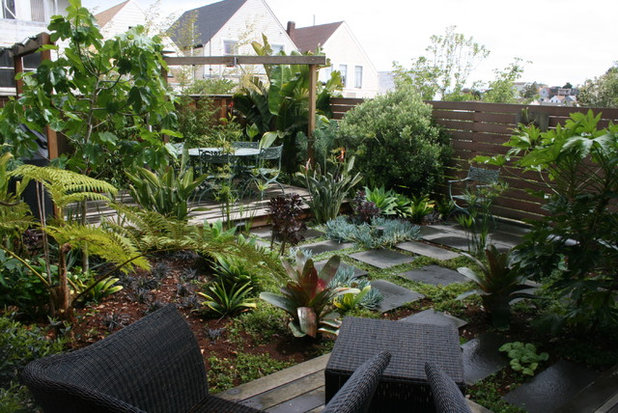
RareField Design/Build
3. Draw your plans. Once you've decided which elements you want to include, and have a better idea of how to utilize your space, draw it out on paper. When you have an accurate (and to-scale) drawing of how things will be laid out, it'll be much easier for you (or anyone you work with) to make sure your finished garden looks exactly as it was planned.
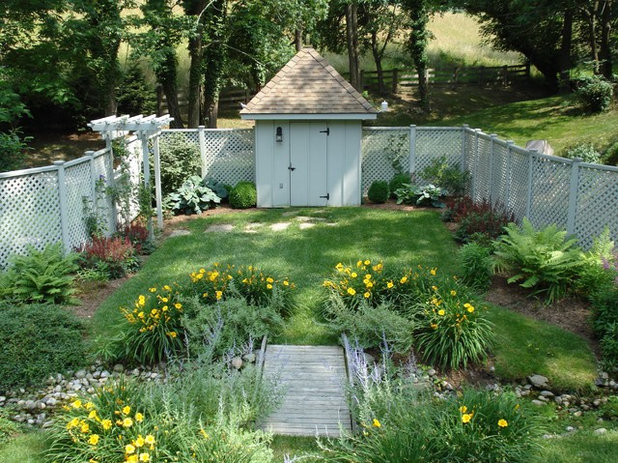
Slater Associates Landscape Architects
Consider your view from your home while drawing your plans. You want your garden to be appealing when you walk through it, but it should also look beautiful from your bedroom window as well. A sense of symmetry balanced in landscaping and hardscaping will make sure your garden develops into part of your home's pleasant view.
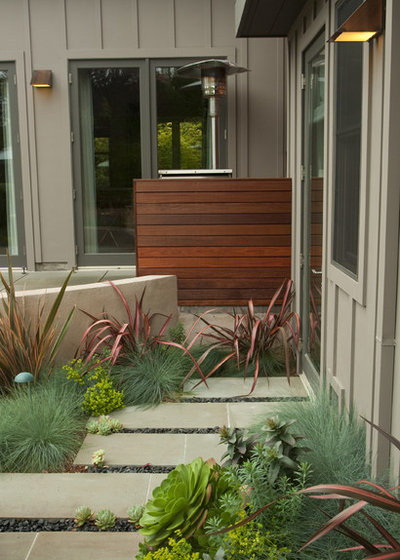
Shades Of Green Landscape Architecture
Think about where you'll put your "hidden area." This could be anything from a secret spot where you can enjoy your wine on summer evenings, to a clever hideaway that prevents trash and compost cans from becoming eyesores. This outdoor space has a smart space to tuck away a barbecue, trash can, or spare bit of patio furniture while not in use.
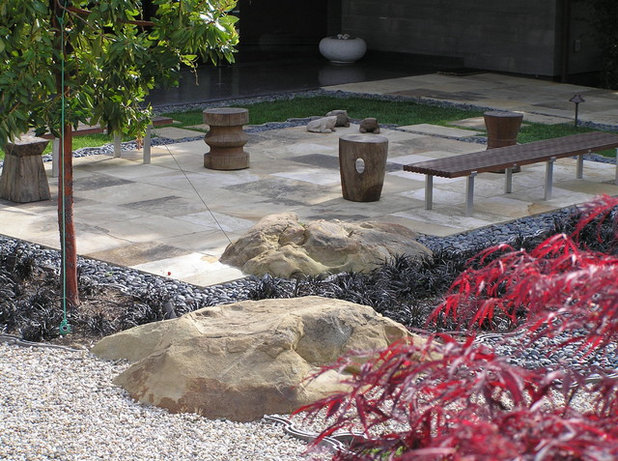
Charles McClure - Professional Site Planning
4. Stick to a consistent, simple style. Make your theme and color scheme simple. Putting too much product in too many styles can quickly become overwhelming. You want your garden to be a soothing place. This space is very minimalistic, and while it has quite a few benches/accessories, they're all in the same neutral tone — creating a smooth and seamless design.
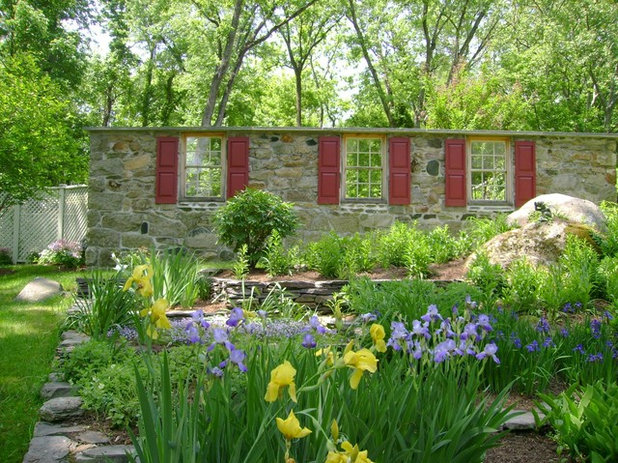
Slater Associates Landscape Architects
Adding a focal point at the end of your garden will automatically draw the eye in that direction, visually lengthening the space. Interchanging a section of the fence with this stone wall and bright shutters provides a functional focal point. The windows in the wall let light in, making sure that the wall doesn't completely block the view beyond. A fountain, urn, or statuette at the end of a garden would serve a similar use.
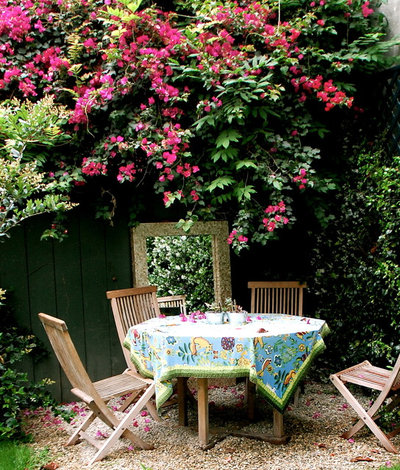
Lisa Borgnes Giramonti
If you have a small garden, this space gives you a great excuse to play with design. Try adding special details that you'd normally find indoors to increase the sense of space. Mirrors are a great way to create an illusion that the space is larger than it actually is.
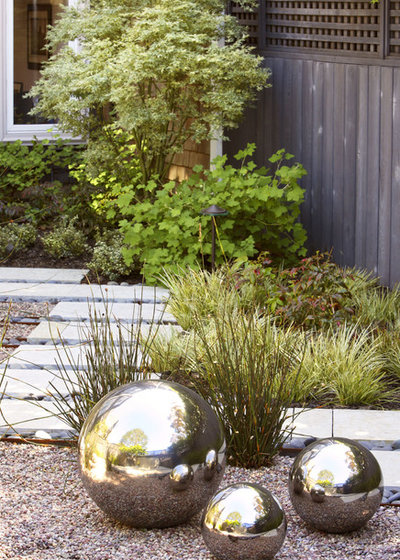
Arterra Landscape Architects
Add mirrored balls next to a pathway or nestled in your landscaping to spread light around. These balls also accomplish the same space-enlarging effects as a standard mirror, but with more of a playful twist.
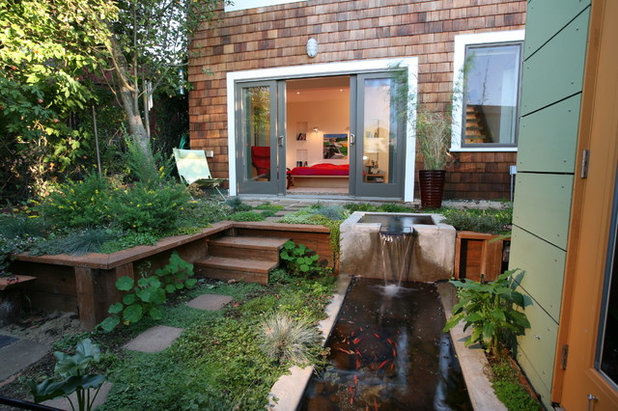
Rossington Architecture
Keeping plants in low (or no) borders makes a garden look wider, while adding different levels gives a sense of texture and dimension to this backyard oasis.
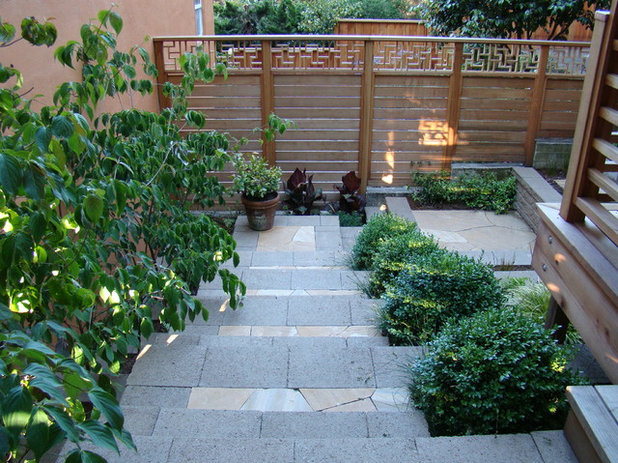
Randy Thueme Design Inc. - Landscape Architecture
These levels are a great way to work with a backyard space that is set on a hillside. Instead of fighting the hill — work with it! Adding raised flower or vegetable beds would provide the same effect, and require less maintenance than gardens with borders.
More ideas:
6 Tips From Great Urban Gardens
Unexpected Edible Gardens
Herb Gardens for Indoors and Out





